Why fixing marketing measurement just got urgent
Just when you need it most, your marketing measurement breaks down completely. This is what is happening for thousands of online marketers in 2024: the perfect storm of technical change, platform fragmentation, and economic pressures.
Increasingly brands face a binary choice: an ever increasing inflationary squeeze on marketing ROI and gamble everything on media platform numbers that just do not add up versus getting serious about investing and taking control of robust cross media measurement.
In this article we outline what is happening in the world of online measurement and steps you can take to get back control.
The new digital measurement apocalypse: why now?
GA4 loss of a unified view : the move to GA4 has changed digital marketing metrics considerably and many marketers have lost a comparable year on year view of their performance numbers. We argue in this post that GA4 is actually a good thing in the long run: it provides a better measurement base to drive future marketing decisions such as the move from visit to event based data. However, it is this transition from familiar reports to more customisable ones, that is causing a lot of head scratching in marketing teams as it requires more effort and analysis from users to derive insights.
Cookie loss comes home to roost : whether Google will move forward with third party cookie depreciation fully in 2024 in the UK based on the move by the Competition Commission outlined here, is somewhat a moot point as third party cookies have become less and less important in marketing measurement. This is due to regulation changes across decades such as GDPR and particularly the Apple IOS 14 privacy move in 2021, which cut off paid social platforms’ ability to understand performance on sales in any meaningful way.
The economic imperative, media inflation and the drop in ROI
A technical recession and consumer loss of confidence; With the UK slipping into a technical recession in February 2024 and no seeming let up on interest rates until the Summer at the earliest: consumer confidence remains low in the UK driving drops in discretionary consumer spending. This is leading to weaker than expected sales online with January 2024 dropping by -6.9% and February by -1.2% according to the IMRG.
This is coupled with an inflationary media environment on the major Big Tech advertising platforms; as more and more companies invest in short term marketing tactics without the increase in user volumes to fully absorb the costs in auction pricing models and keep CPCs steady.
Nest Commerce point to an increase of 20% in Google Cost Per Clicks (CPC’s) YoY in Q4 2023. They have slightly better news on Meta with a 16% decrease in CPM’s YoY in the same period but a 43% increase QoQ as more online advertisers concentrated their spend in the peak trading period.
This is leading to pressure on marketing teams as costs to drive revenues on the digital platforms get more expensive and Return on Investment of marketing spend falls.
The drive for more and more short term results is fuelling an inflationary spiral
This is partly being driven by pressure from management and marketing teams to drive more and more demonstrable short term results to combat these heady economic cross winds. Conversely this is actually fuelling the increase in digital platform inflation and reducing overall marketing ROI.
This is because the digital platforms can provide the chimera of measurability but too often overclaim their channels impact and make measurability between their walled gardens extremely hard.
One answer for marketing teams to this conundrum is to try and use digital marketing inventory in new ways: such as upper funnel activities and different creative formats, to reach a wider audience pool and grow the business through a renewed focus on new customer acquisition. Alternatively, they could choose to use more upper funnel tactics in broader media channels, such as TV or radio, with their lower CPMs to help drive digital costs down through higher CTRs and branded searches.
This is excellent marketing advice but poses another measurement challenge as many tactics to acquire new customers, or use non digital media, are harder to measure and take longer to show effects.
The scramble for solutions : Meta and Google have both acknowledged that they have lost the ability to provide advertisers a full funnel view of their performance and launched free open sourced Market Mix Modelling (MMM) approaches such as Meta’s Robyn and Google’s Meridian.
This is an interesting move as MMM helps brands decide where to spend the big budgets based on a statistical model, deciding how many millions to allocate to marketing based on cross channel ROI and underlying business drivers.
Meta’s Robyn offers a detailed guide for analysts through its complex steps for robust marketing mix modelling, whilst Google’s Meridian promises integration with incrementality experiments and advanced analytics, highlighting Google’s focus on calibration and actionability.
Of course in digital, it will be Google and Meta that take the lion’s share of this spend, so naturally they want marketing teams to get the ‘right’ answers.
The genuine digital measurement challenge that MMM is addressing in 2024 is cookie deprecation which leaves brands clueless about the true ROAS from Social and Display. It also means that most Multi-Touch Attribution (MTA) only works for first party clicks (apart from Metageni as we offer impression models within our customer MTA) so the ‘upper funnel’ of Youtube, Meta and Instagram all need to be understood a bit more like TV.
However, is this really the way to go? Why aren’t these tech behemoths offering simpler, self-service MMM SaaS tools ?
The answer lies in the intricacies of MMM itself. Without expert data integration, feature selection, model calibration and then informed interpretation, these powerful models can easily lead you astray, producing results that are more misleading than enlightening.
This underscores a critical point: the value of these tools isn’t just in their open-source accessibility or advanced features. It’s in the expertise of those who wield them, blending data science with marketing acumen to extract actionable insights from complex data landscapes.
The perfect storm
Taken together these factors really can be described as the perfect storm. This metaphor may be sometimes overused, but here the hyperbole is justified. It really is like being increasingly lost in the wilderness looking for shelter just when a big storm hits, your map gets blown away and your compass starts spinning widely around. Losing accurate measurement in today’s business climate is a genuine nightmare for any brand that relies heavily on digital marketing to sustain and grow sales.
What steps can marketing teams take in the world of online measurement to take back control?
We advocate getting serious about investing and taking control of your cross media measurement to find new directions for growing your business faced with increasing pressures.
We strongly recommend the trifecta approach to measurement across 1. attribution 2. MMM and 3. incrementality testing.
For highly digital businesses with a high proportion of their spend on digital channels, we recommend leaning into the significant advantage they have in already collecting and retaining first party data.
First-party data includes data housed within a company’s CRM system such as customer account data, or data from owned media assets (such as a website or app) that reveals preferences, interests or behaviours.
It can be used for day-to-day measurement systems, such as Multi Touch Attribution, as the foundation layer. This approach drives actionable insights to optimise digital activity daily and gets quick ROI improvement decisions.
We recommend enhancing this approach with MMM or econometric analysis to measure channels not as easily measured by first party data or daily time scales such as paid social, TV and sponsorships. This can be overlaid on top of an attribution approach to get a full channel view of impact and is useful in annual planning or making decisions on large unwieldy investments such as big multi-year sponsorships.
Periodically we would then recommend Incrementality Testing of key channels and decisions. Incrementality is a true test and control approach but it can be time and resource intensive to set up multiple tests so plan these sequentially across a year. Once set up, the results can be used to calibrate the response curves in MMM and attribution and used in forecasting.
The trick is not to see the trifecta as 3 distinct measurement techniques but blend them into a unified data view to provide a single source picture.
We’ve pioneered a unique approach to how to unify your data across multiple methodologies to enable more accurate forecasting of changes in the marketing plan on eventual revenues. We outline how this works in our demo video here.
Get serious about marketing measurement investment
To find your new path forward, it pays to get serious about marketing measurement and invest in the capabilities to hunt out new directions. This is not empty ‘Non Working Spend’. We have customers who are achieving an ROI of £30 for every £1 spent on their marketing measurement programme as it more accurately roots out any wasted spend and recommends channels with headroom for higher growth.
Get in touch with us for expert advice!
Thanks for reading!
If you want to learn more about expert data analytics and custom attribution using machine learning, or are interested in how Metageni can help you use your data to grow online, then do get in touch with us: hello@metageni.com
And check out our free guidebook on marketing measurement.













